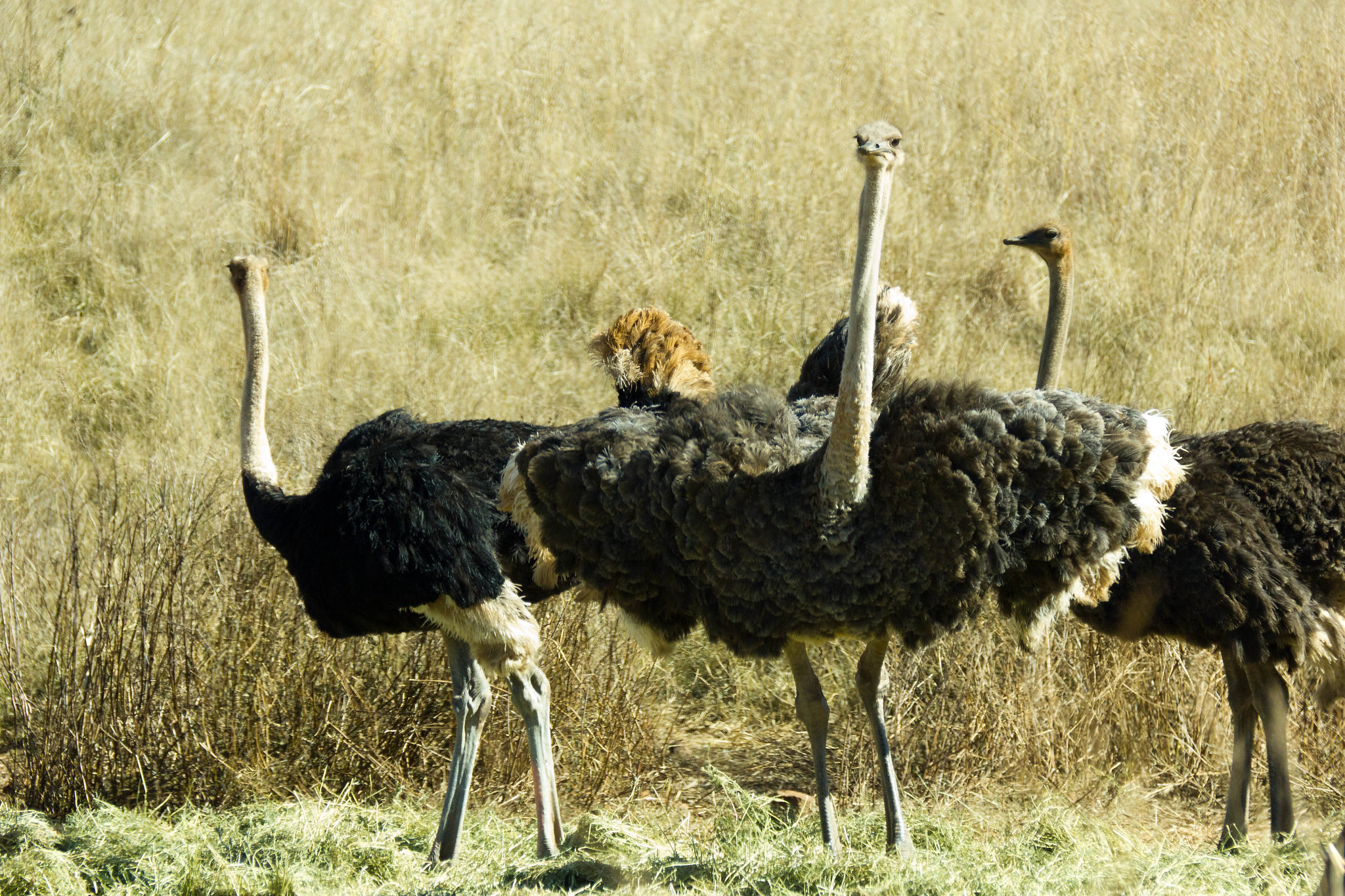10 Fun Facts About Ostriches—Swift Runners of the Plains
10 Fun Facts About Ostriches—Swift Runners of the Plains. One of the most interesting and unusual birds in the world is the ostrich. In the African desert, these birds that can’t fly stand out because of their size, speed, and height.

Let’s look at the ostrich’s ten most interesting facts.
1. There are two types of ostriches.
People often think of ostriches as a single species, but there are actually two separate species, each with its own traits and preferred environment.
The common ostrich
The more common of the two is the Common Ostrich, which lives mostly in sub-Saharan Africa. Women of this species have duller brown feathers, while the males show off their bright black and white feathers. In Africa, they mostly live in savannahs and forests, such as in the game parks of Tanzania.
The Somali Ostrich
The Horn of Africa is home to the Somali Ostrich, which has a slightly different look. The males have a blue-gray neck and legs that make them stand out. Even though they are brown too, the females of this species tend to be a little lighter.
2. They are the biggest bird in the world.
There are no bigger or heavier birds than ostriches all over the world. It could be up to 9 feet (2.8 meters) tall and weigh up to 345 pounds (156 kilos). An ostrich’s wings are about 6.6 feet (2 meters) long.
The ostrich is much bigger than its relatives. That being said, the Australian Emu is the second-biggest bird, but the ostrich is much bigger. A full-grown emu can be up to 6.2 feet (1.9 meters) tall and weigh up to 121 pounds (55 kilograms).
3. Ostriches are very fast runners but can’t fly.
Ostriches can’t fly because they are too big and heavy. Like all other birds, ostriches came from relatives that could fly. However, as these birds adapted to the open savannas and grasslands of Africa over millions of years, flight became less important for life and more of a strain on their energy. This caused their wings to get smaller and their legs to get stronger. An ostrich can walk 10 to 16 feet (3 to 5 meters) in a single stride. That’s how fast it can go: 45 mph (72.5 km/h).
4. They only have two toes
Didactylism is the name for the fact that ostriches only have two toes on each foot. They are different from most birds because they have five toes instead of three or four.
Ostriches can run well because their feet have two toes. Fewer toes mean less weight and drag, which helps the animal move quickly, smoothly, and efficiently. The bigger surface area of these toes also helps with speed, balance, and grip, all of which are important for getting away from predators.
The big toe features a robust tip, resembling a hoof.
5. Ostriches tend to live in groups.
Birds of prey like to be around other animals, and ostriches often live in groups of about 12 animals, which are called bands or herds. These social groups help ostriches stay safe from predators and give them a chance to find food together.
These kinds of groups usually have a dominant male and a main female. Below her are a number of other females who work together to form a hierarchy. The dominant male and major female are the ones who breed, while the subordinate females help take care of the nest. This way of parenting makes it more likely that the young will survive.
6. Ostrich males dance for their females
When ostriches mate, they do a lot of complicated dances and actions. The male ostrich does a complicated dance when it’s time to breed. He moves his wings back and forth between flapping and sweeping motions, as well as dipping and bending. This show lets possible partners see how strong and healthy he is.
Additionally, the male’s feathers, which are a bright mix of black and white, become more colorful during this time, making him look even more appealing. When these displays happen, the female ostrich adopts receptive positions to show that she is interested.
As soon as a pair forms, the male protects the female from other animals that might try to mate with her.
7. Ostriches have a special kind of stomach
Ostriches eat a wide range of things, but their main foods are plants, seeds, insects, and small animals.
The glandular stomach (proventriculus) and the gizzard (ventriculus) are the two main parts of their gut. It is the glandular stomach that does the first digesting by releasing digestive enzymes and acids. Like the stomach in animals, it works the same way. The gizzard is a strong part of the gut that breaks down food. When ostriches eat rocks and pebbles, the rocks stay in their gizzards to help break down tough plant matter.
8. They produce the largest eggs in the world.
The ostrich egg is unique because of how big it is. It’s the biggest egg that any live bird has ever laid. Most ostrich eggs are about 6 inches (15 centimeters) long and 5 inches (13 centimeters) wide. They weigh about 3 pounds (1.4 kilos). This is about the same as 24 chicken eggs!
It’s also amazing how thick the shell of an ostrich egg is. It’s about 3 mm thick and so strong that a person can stand on it without breaking it. African groups used empty ostrich eggs as containers because they were strong and could hold a lot of stuff. They often decorated them with carvings or beads.
9. Ostriches can kill you with one kick
The ostrich is fast, but it also knows how to protect itself by using its strong legs. They can give devastating kicks that can scare away even the most dangerous animals. The force of their hits can reach 2,000 pounds (141 kilograms) per square inch. With its four-inch (10 cm) sharp claws, the ostrich has a powerful weapon that can hurt or kill lions.
During fights with other ostriches, they often act aggressively by spreading their wings and hissing loudly to scare their opponents. Animal fights between birds can get very rough, with birds using their legs and bodies to beat each other up.
10. They don’t hide their heads in the sand
Ostriches don’t hide their heads in the sand like most people think they do. The story says that ostriches bury their heads to hide from animals that want to eat them. That is, the animals that want to eat the ostrich can’t see them if the ostrich can’t see them.
Of course this is nonsense. In fact, ostriches have a unique way of protecting themselves, which may have led to this misunderstanding. They try to hide by lying flat on the ground and stretching their necks out when they feel attacked and can’t run away. From a distance, this may give the impression that they are buried in the sand.
Those are the 10 Fun Facts About Ostriches—Swift Runners of the Plains.
An Ostrich’s Quick Facts
Struthio camelus is its scientific name.
Name for Animal: Ostrich
Size: between 6.9 and 9.2 feet tall
Weight: 139 to 320 pounds for women and 220 to 345 pounds for men
It lives for 40 to 45 years in the wild.
Diet: Omnivore (mainly eats plants, but sometimes bugs too)
African savannas, fields, and open forests are where they live.
Status of the conservation: least concern
Want to see ostriches where they live in the wild? Come with us on a safari in Tanzania. 10 Fun Facts About Ostriches—Swift Runners of the Plains


















